– FAMOUS MOPAR® AA/FC FEATURED IN LIFE MAGAZINE 1972
– SUPERCHARGED NITRO GEN II HEMI® ENGINE POWER
– CLASSIC E-BODY FIBERGLASS FUNNY CAR BODY
Long-time car enthusiast Lee Fabry was walking around an NHRA drag race at Pomona Raceway, viewing the restored racecar display. He saw a vintage Funny Car and said to one of his buddies, “I’m going to build one of those!”
Fabry grew up in Southern California and as a kid he frequented places like Lions, Pomona, Irwindale and OCIR. Funny Car meets were a favorite of his and he attended them numerous times back in the early 1970s, which most people now recognize as the true “glory years” of the fiberglass floppers.
Once the bug had bitten him, he looked around on various websites for used Funny Cars (complete or in pieces) and soon found a few different choices, including the Custom Body Enterprises Dodge Challenger that was based out of Utica, NY, and raced in the early 1970s. After doing some quick research on the car (he found that this 1973-era Custom Body car – which raced both NHRA and IHRA, plus match races – was a successful racecar), he knew that it won races, plus was visually striking in appearance.
Nitro Funny Cars in the early 1970s were not “cookie-cutter” cars and that, along with the fact that this car had history and the beauty of the original paint, helped him make the decision to purchase it. And when a color photo layout by Jon Asher was found, the “Utica Flash” magazine spread, that was a huge motivator to get this iconic car back in the limelight!
EAST COAST TERROR
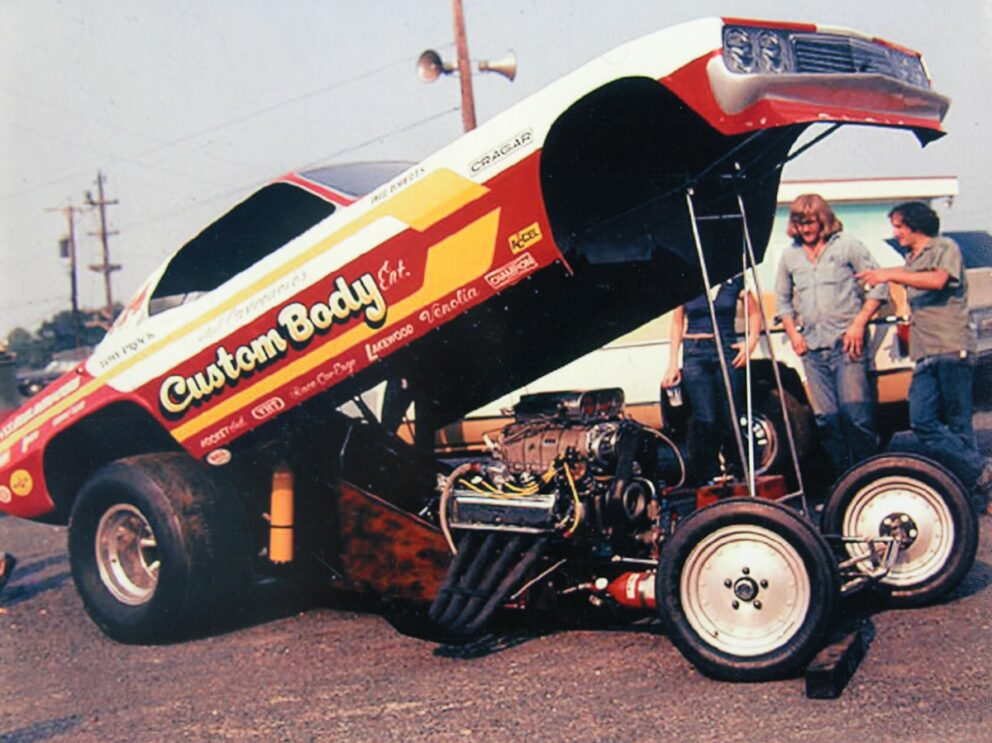

Back in the day, the car ran in the low 6-second range and at 235 mph, all the while being consistent and easy on parts. The big wins the Custom Body car won during 1973: Super Stock Magazine Nationals, New England Funny Car Nationals, plus it was the Grand American Funny Car Eliminator winner.
A number of photos and vintage drag race magazines were obtained, including an original handout with all the specifics listed on the chassis, engine and safety equipment.
LIFE MAGAZINE PHOTO SPREAD OCTOBER 1972
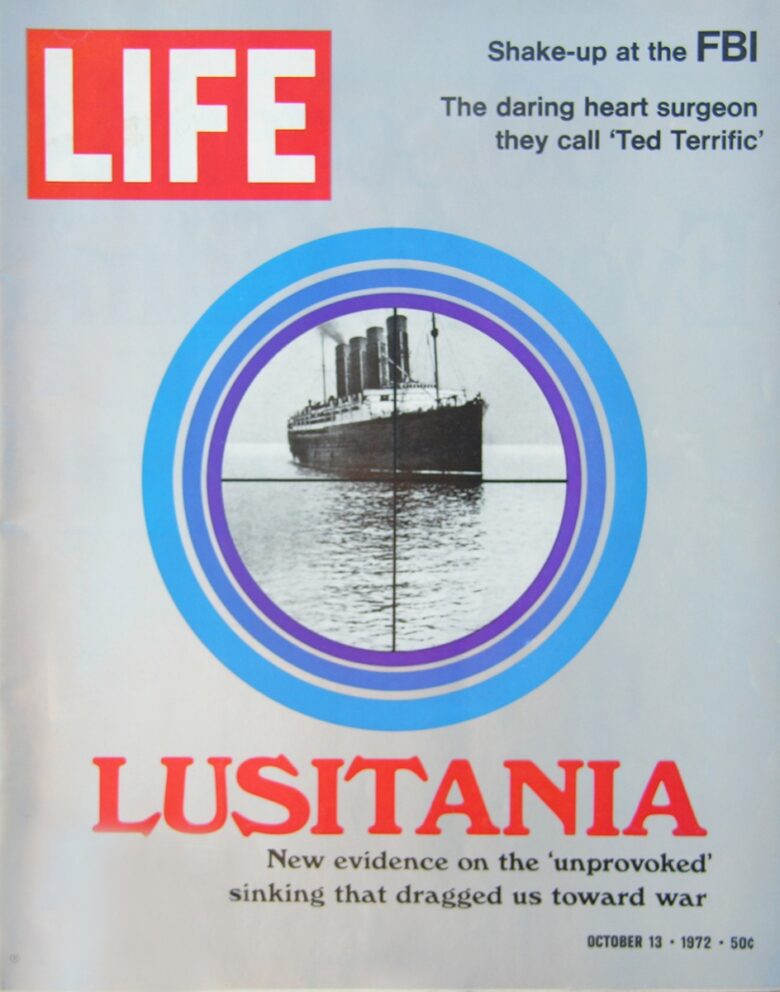
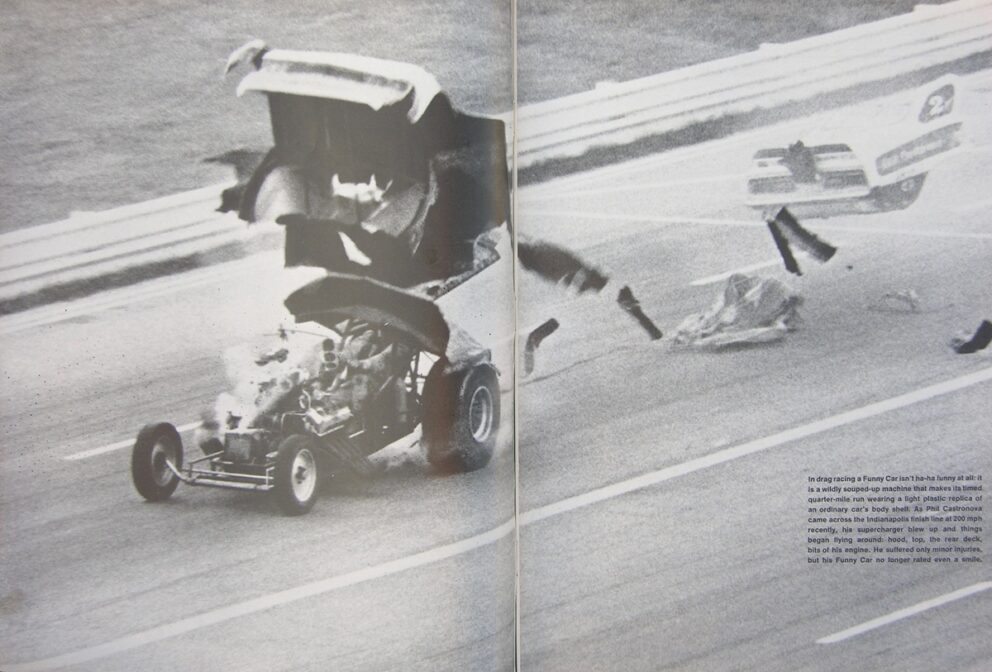
Photos of drag racecars were not typical in LIFE Magazine and for the October 13, 1972 issue, there was this two-page spread of the Phil Castronovo-driven Custom Body Dodge Challenger exploding through the lights at the NHRA U.S. Nationals, a major ka-boom! Phil was one of four Castronovo brothers, and this unfortunate supercharger blast (and subsequent crash into the guard rail) prompted his retirement behind the wheel. Tom Prock was the replacement, a close friend of the Castronovo family. A new car was built (the ’72 car was pink and white) with the replacement being the pictured 1973 red version.
DON KIRBY AND NAT QUICK
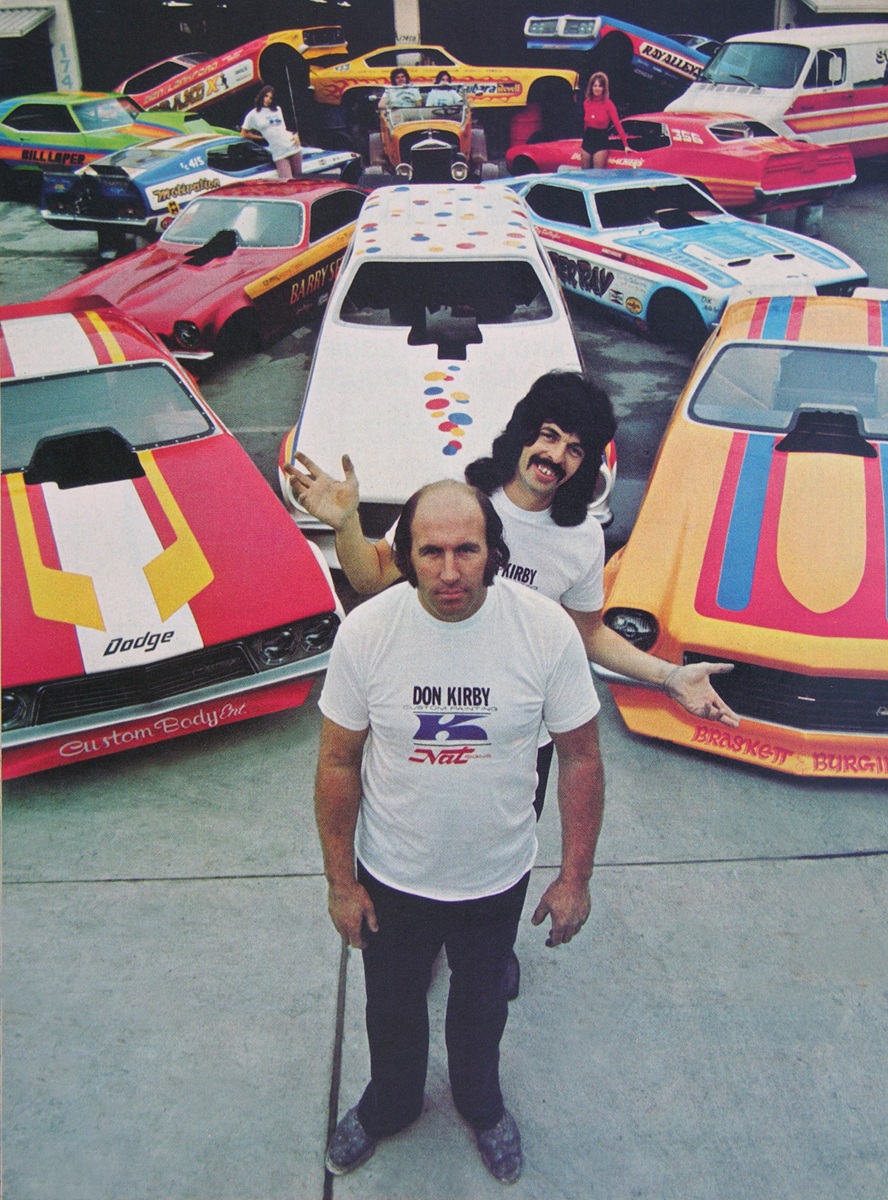
The famous pic taken at the Bellflower, CA, “Funny Car Supermarket” shop with numerous Funny Car bodies positioned behind Don Kirby (paint) and Francis Nathaniel “Nat” Quick Jr. (lettering and design), is a fantastic look at what it was like back in the day. Yes, colorful Funny Cars with wild graphics!
REFERENCE PHOTOS
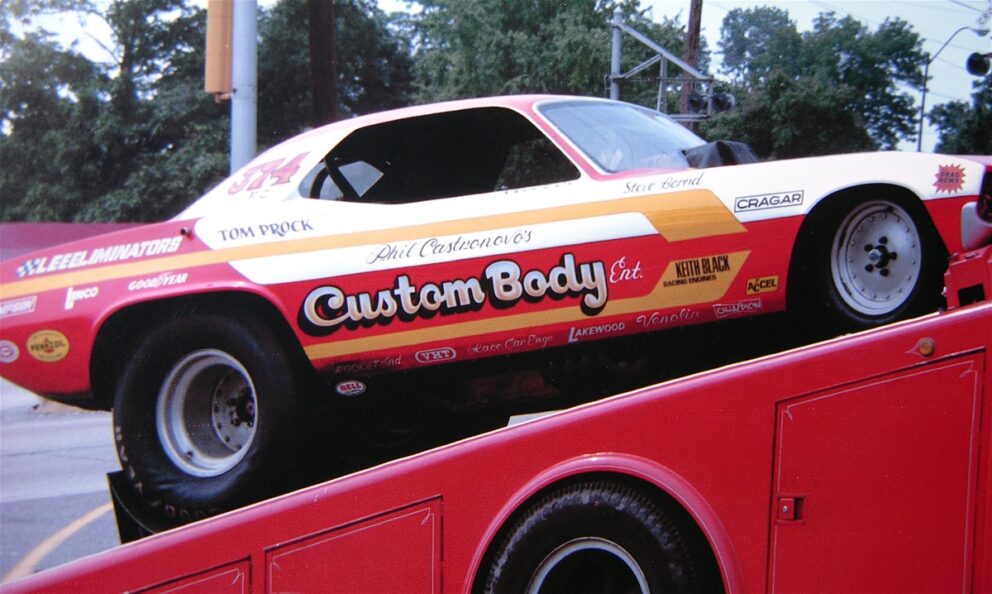
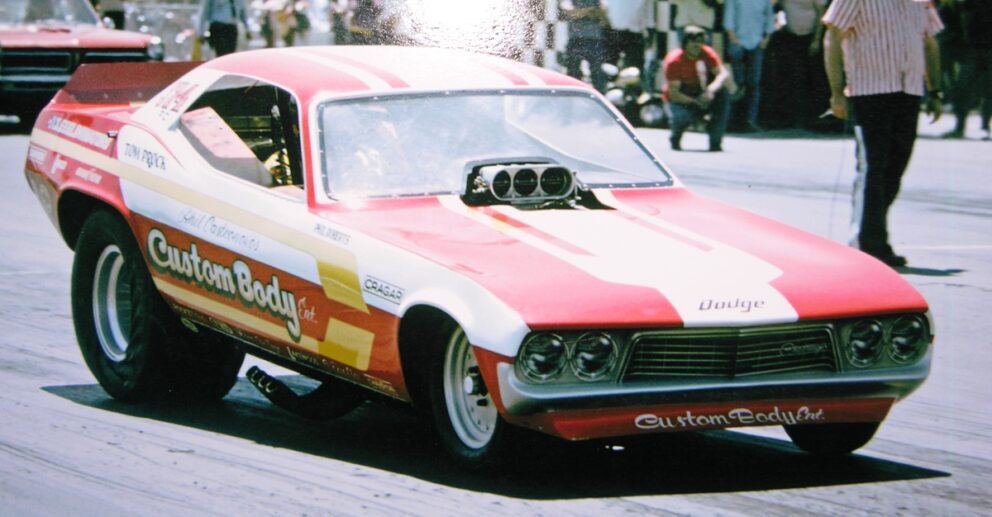
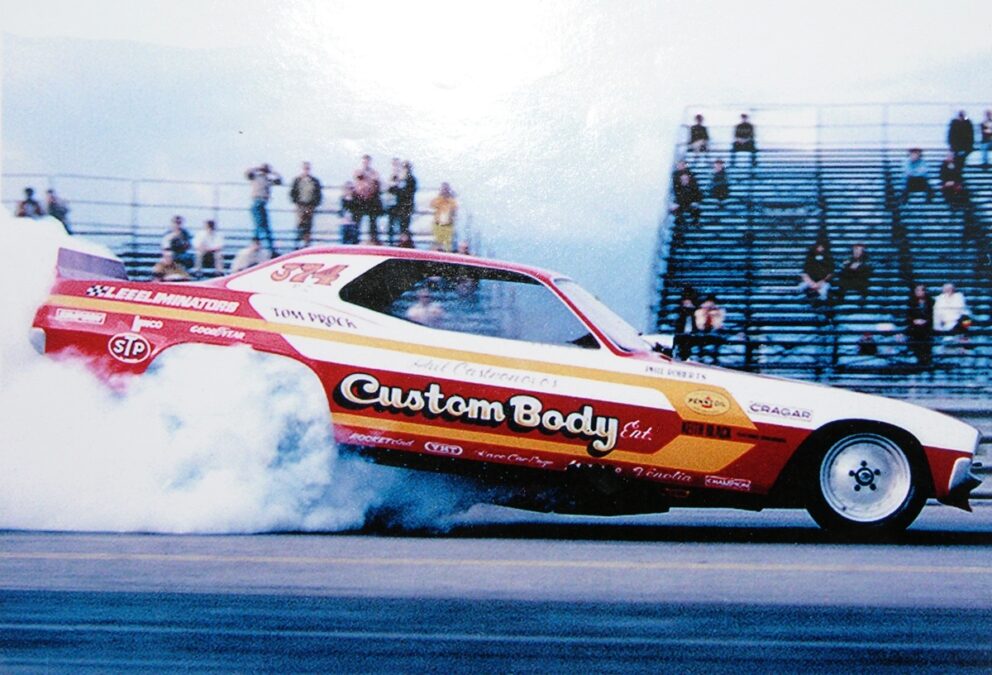
It was fortunate car owner Fabry had found several good reference photographs, which helped immensely! Fabry even got the sign painter Phil Durante (who assisted Nat Quick on the original) on the phone to work out some lettering details.
BODY SHELL FOUND!
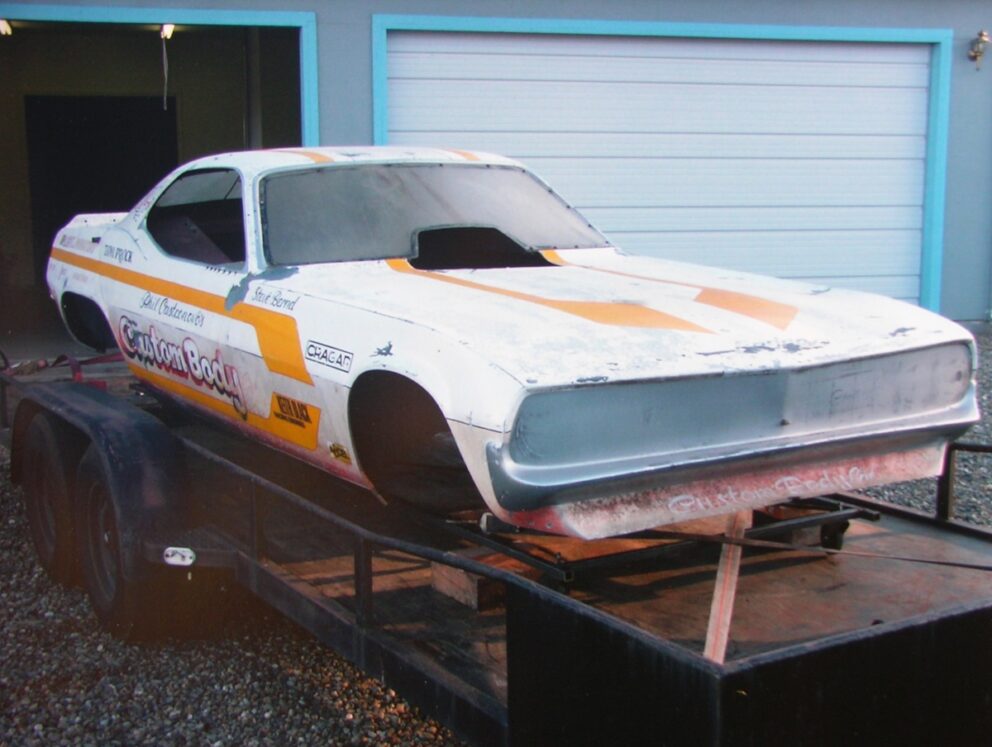
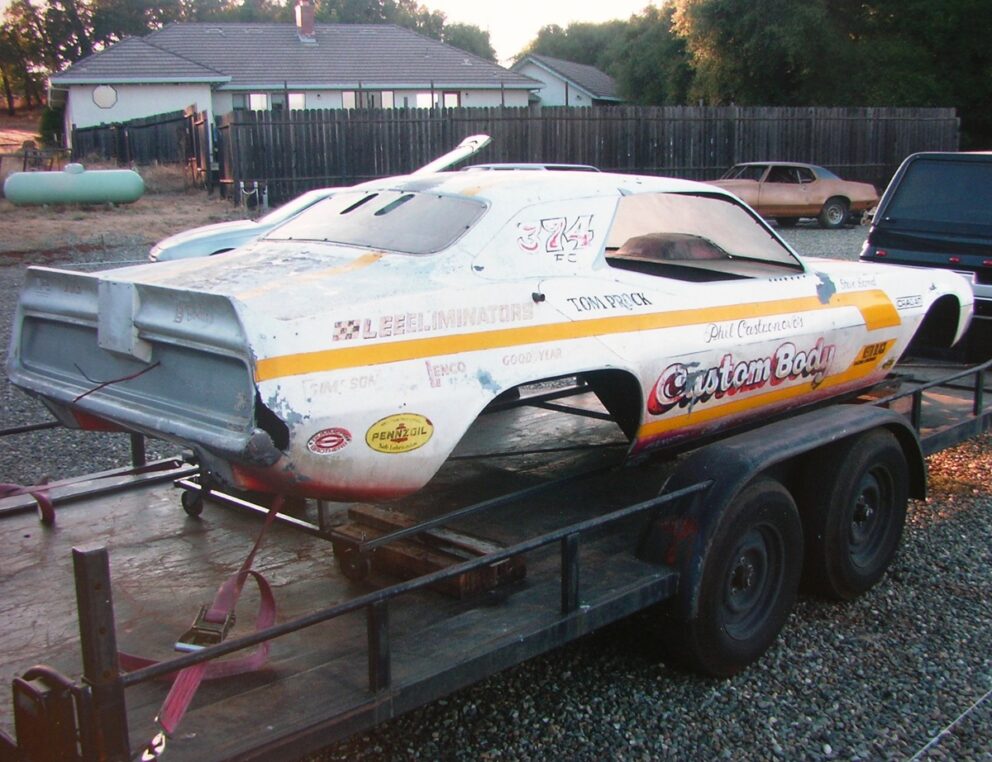
Amazingly, the Custom Body body from the 1973 season had been saved, a few cracks in the fiberglass and faded paint; however, it had survived through the years! Charles Ware bought the body from Fred Castronovo, and Brett Nation did the repair and initial body preparation prior to it landing in the hands of Lee Fabry.
ORIGINAL TIN
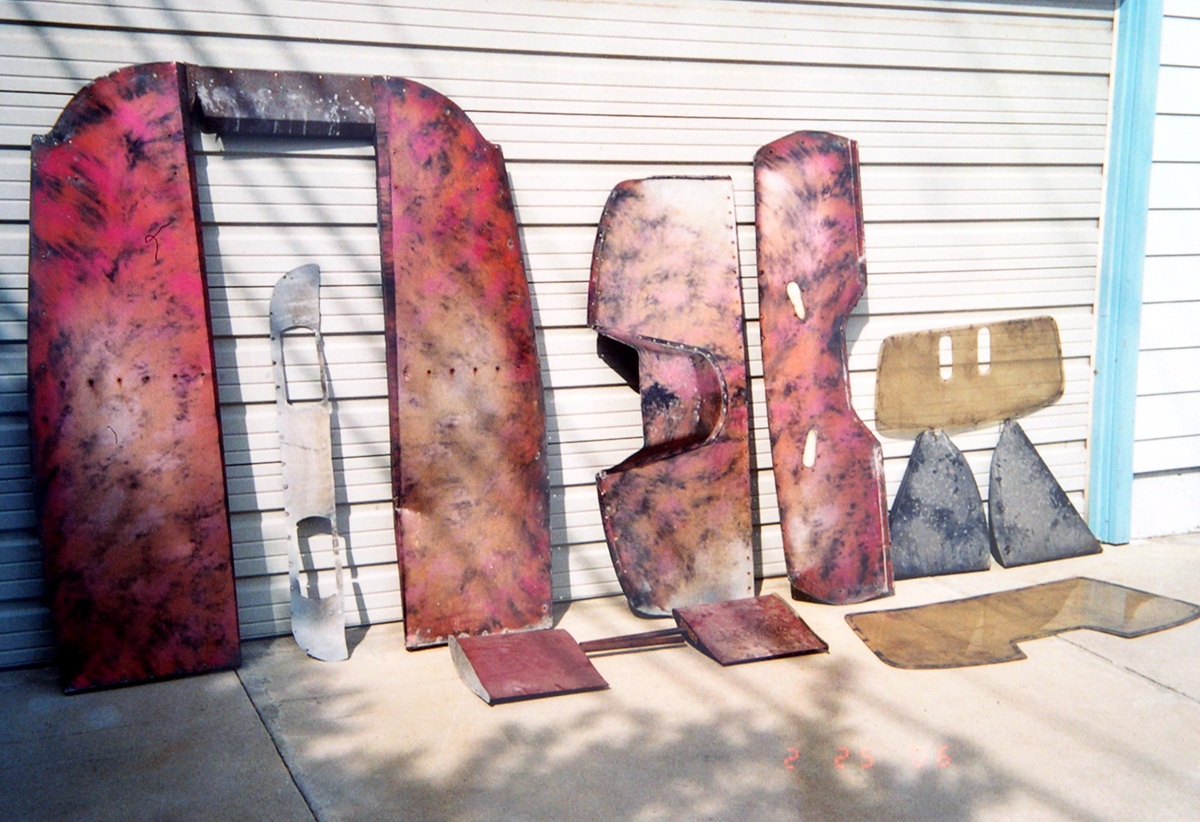
The body came complete with the tin and canard wings, and what is unique about the aluminum work is that it was done in a red “marbleized” pattern, a feature that was done to selected Funny Cars during the era. Fabry was able to track down a shop that specializes in this kind of specialized work, and all-new tin was readied for the car.
INSPIRATIONAL WALL ART
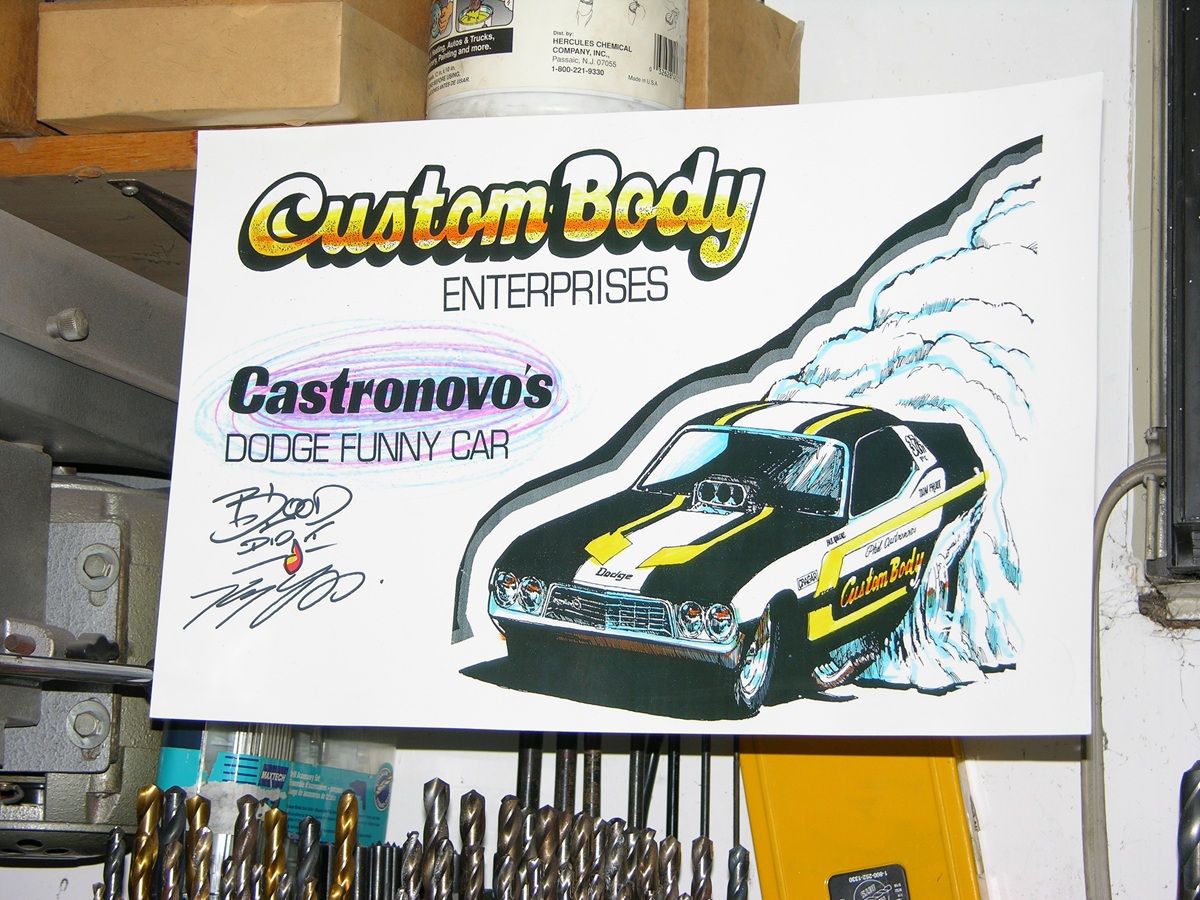
Throughout the entire build and restoration process, always hanging on the family garage wall was this Kenny Youngblood signed rendering of the project at hand – great inspiration and a wonderful visual way to keep focus!
FULLY REFURBISHED AND PREPPED
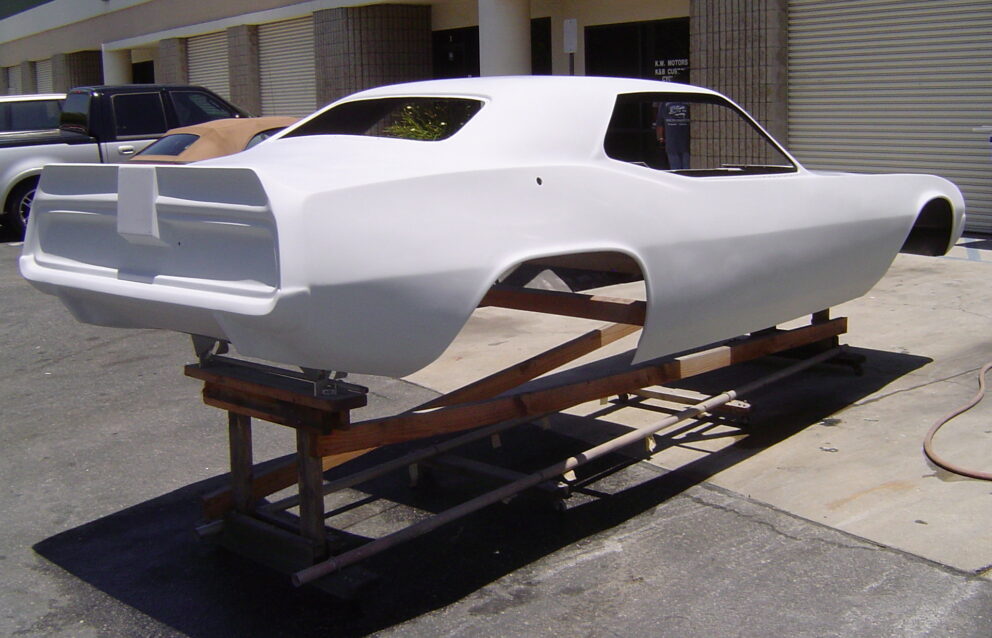

The body was painted with House of Kolor KS White Sealer, followed by two coats of BC 25 White, plus three coats of White Sparkle Pearl (mixed in SG100). After the final coat flashed for 15 minutes, Steve applied three coats of House of Kolor UC 35 Klear. The car was now ready to be wet-sanded (500 grit) for the painting of the Red and Yellow hues (plus for the grille, taillights, bumpers and lettering work that was to come).
NEW PIPE
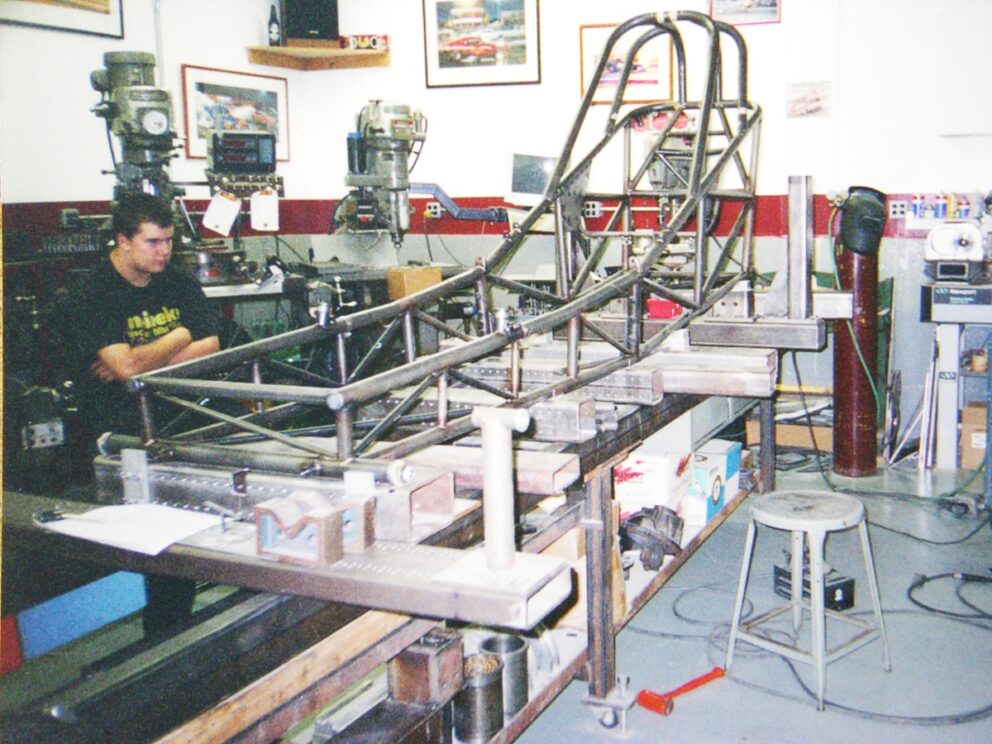
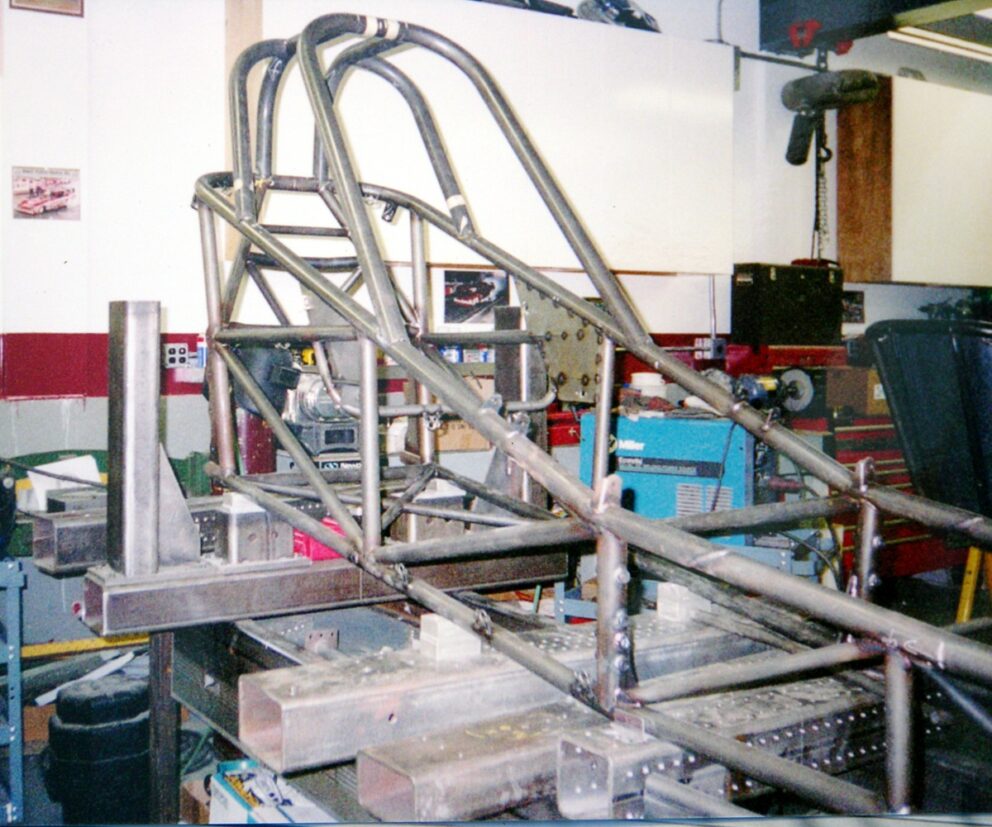
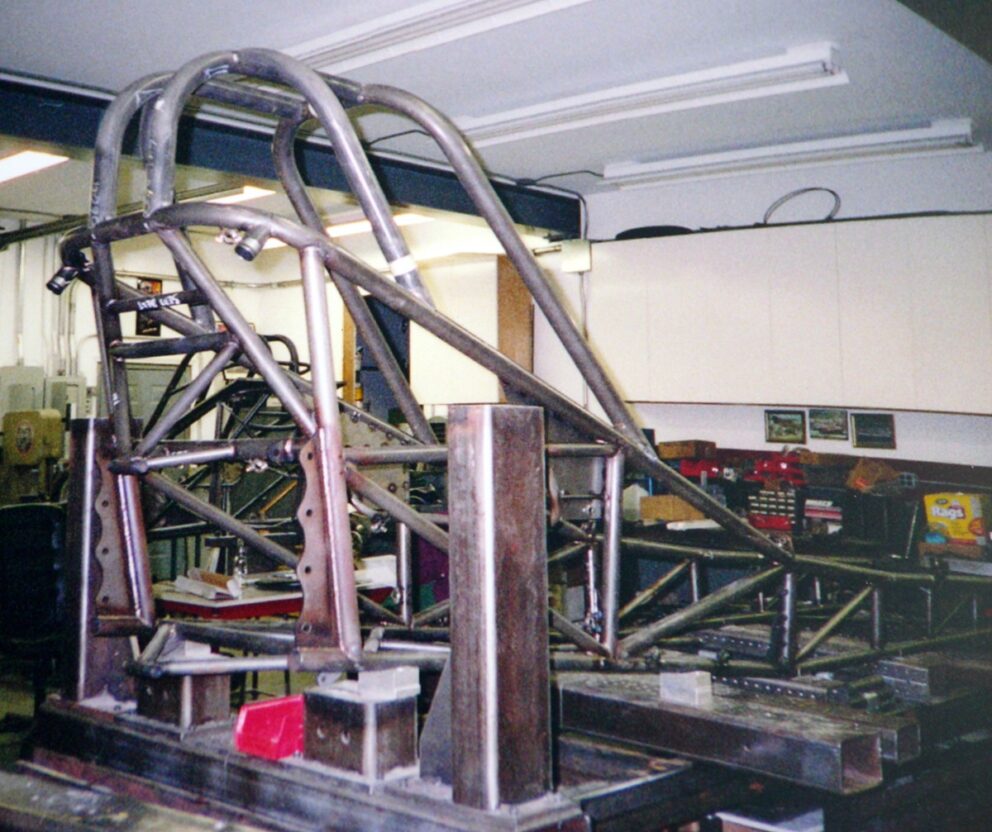
With only a body and no engine or chassis, he then started to look for a way to put all the pieces together! Another ad was placed and this time Fabry was after a suitable chassis for the project. The body he purchased was from the late-1972 and complete 1973 racing seasons, so he wanted a correct chassis to match. Bob Rosetty had a matching Woody Gilmore Race Car Engineering 118-inch wheelbase chassis, an era-correct example of what was needed for the resurrection of the Custom Body Enterprises car. A new chassis was constructed and the work, the craftsmanship, is superb! The replacement 4130-chromoly chassis is totally accurate for this car.
Rosetty told Fabry of the availability of providing a new chassis, and explained that he could build one off the jig that was exactly the same as the original. Or, he could add two bars on the roll cage, which would make the frame comply with the latest NHRA safety rules. Fabry went with the updated version, figuring it would be wise “just in case” the car ever turns out to be more than a museum piece. With the safety update, it’s now a six-point roll cage as opposed to the earlier used 4-point cage.
MOCKED-UP READY FOR PAINT
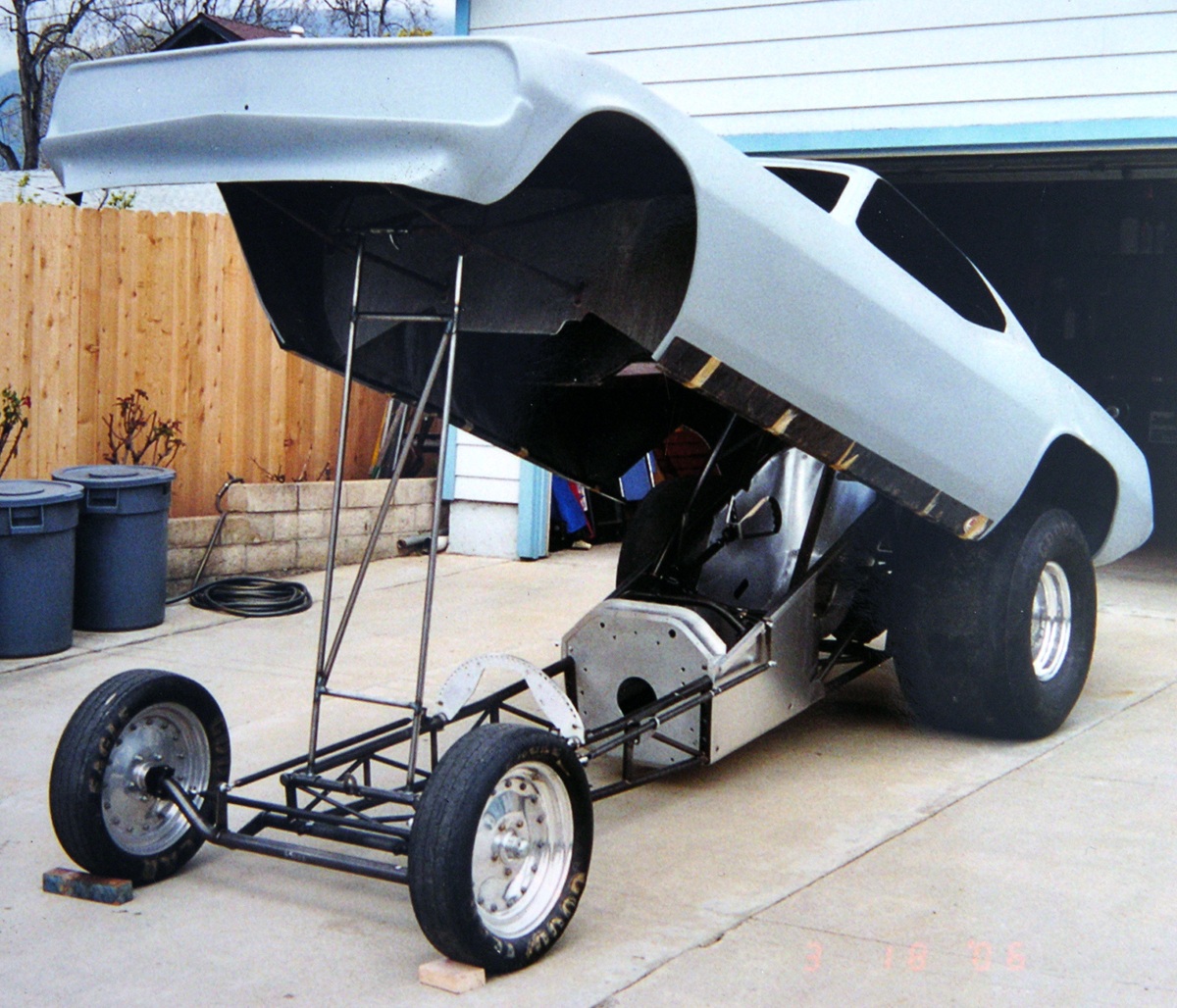
Progress had been achieved at this point; however, the real magic of the car was going to be the paint, lettering and airbrush work. It was like a blank canvas ready for spray gun, paint brushes, air brush, pinstriping and extreme attention to detail!
Early in the project, Fabry had contacted original owner Fred Castronovo, as well as the crew chief (Phil Roberts) and driver (Tom Prock), with all parties interested in seeing the colorful machine return to its former glory!
FUNNY CAR STEVE
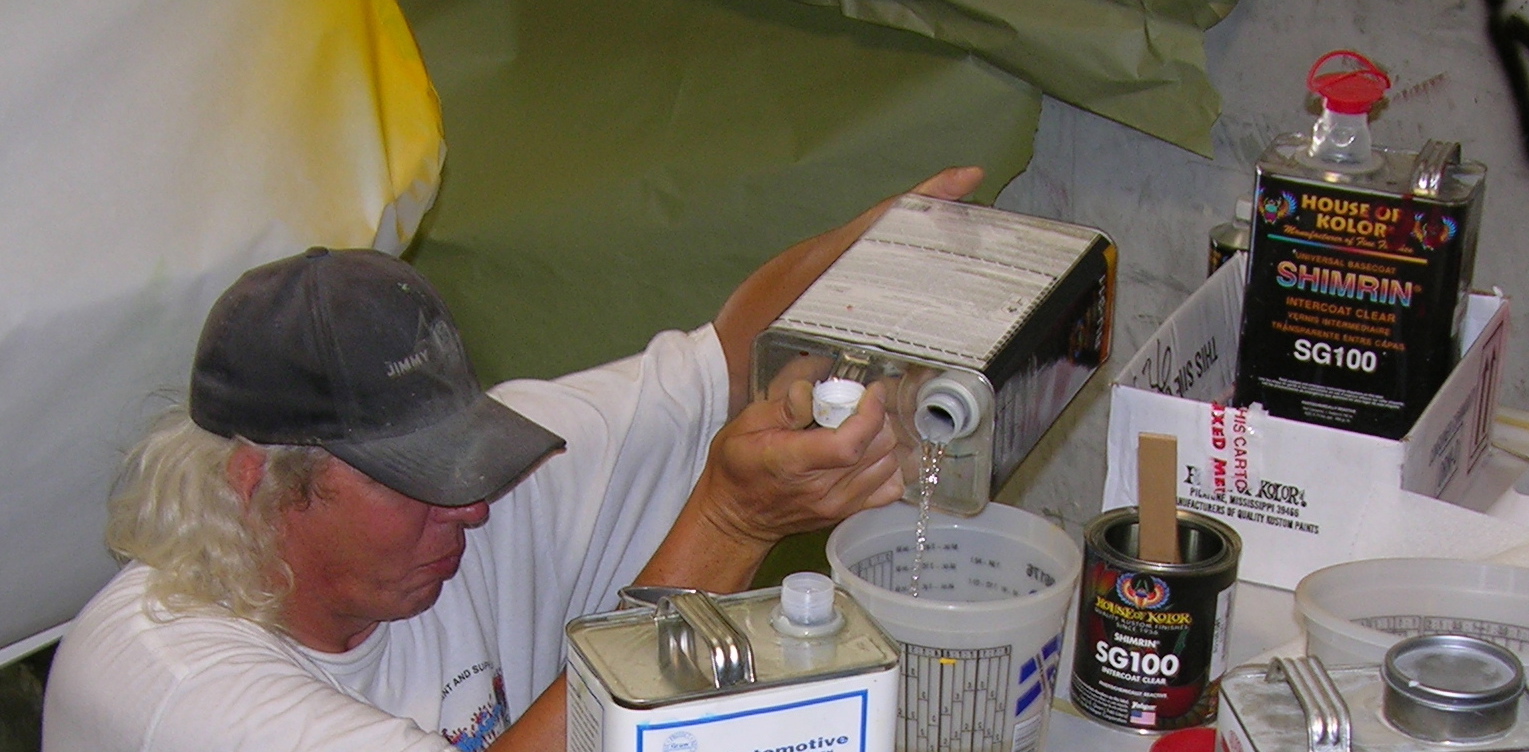
The car has attracted much attention in the fast-growing vintage Funny Car world at the time and that’s where Steve Shuck, the car’s painter, enters into the picture. He heard about it and contacted Fabry. Everything was moving in a fast pace and the pieces were falling into place!
For Steve Shuck, it really started way back when he was growing up in the St. Louis, Missouri, area. When the Funny Cars came rolling into town, Steve’s mom would drop him off at St. Louis International Raceway and young Steve would be in true nitromethane Nirvana the entire time he was at the track. Now, an experienced painter extraordinaire, he definitely was suitable for the job of recreating the Custom Body Dodge Challenger body shell.
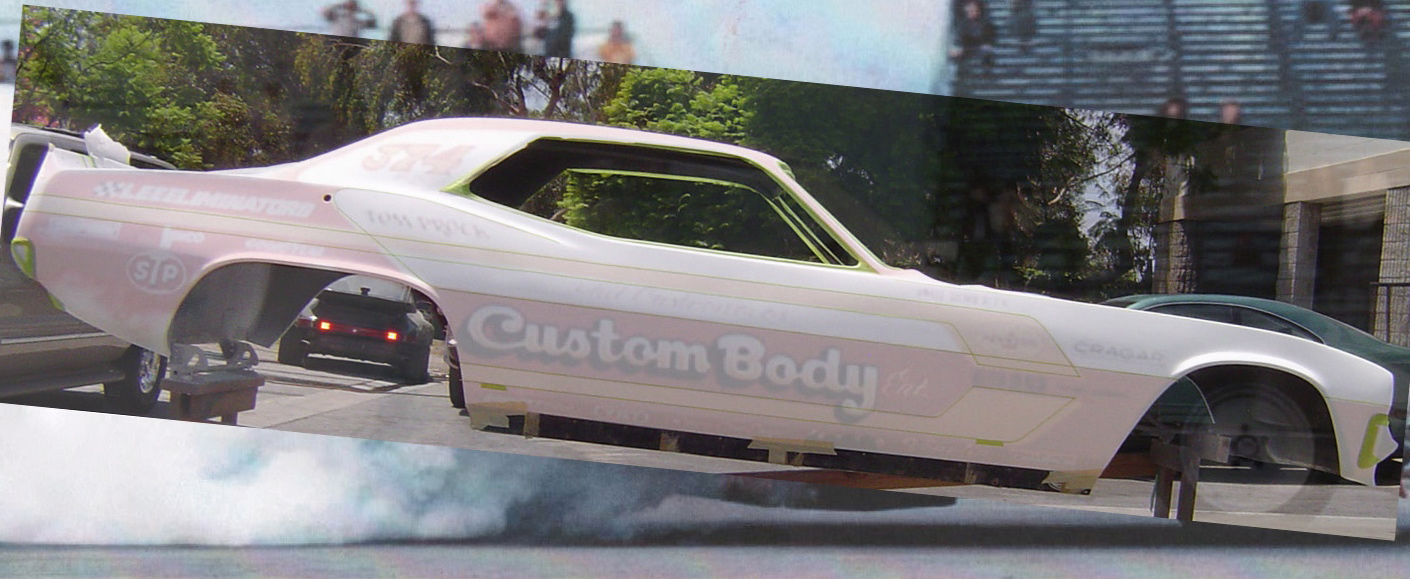
Steve has a method of uniting a photograph of the original paint design unto the primered body image, which totally eliminates any guess work.
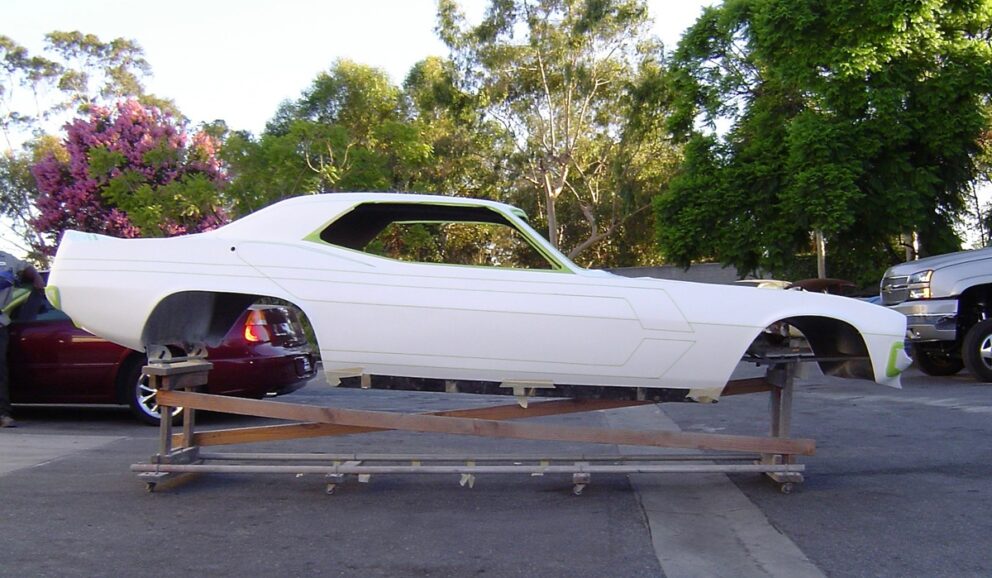
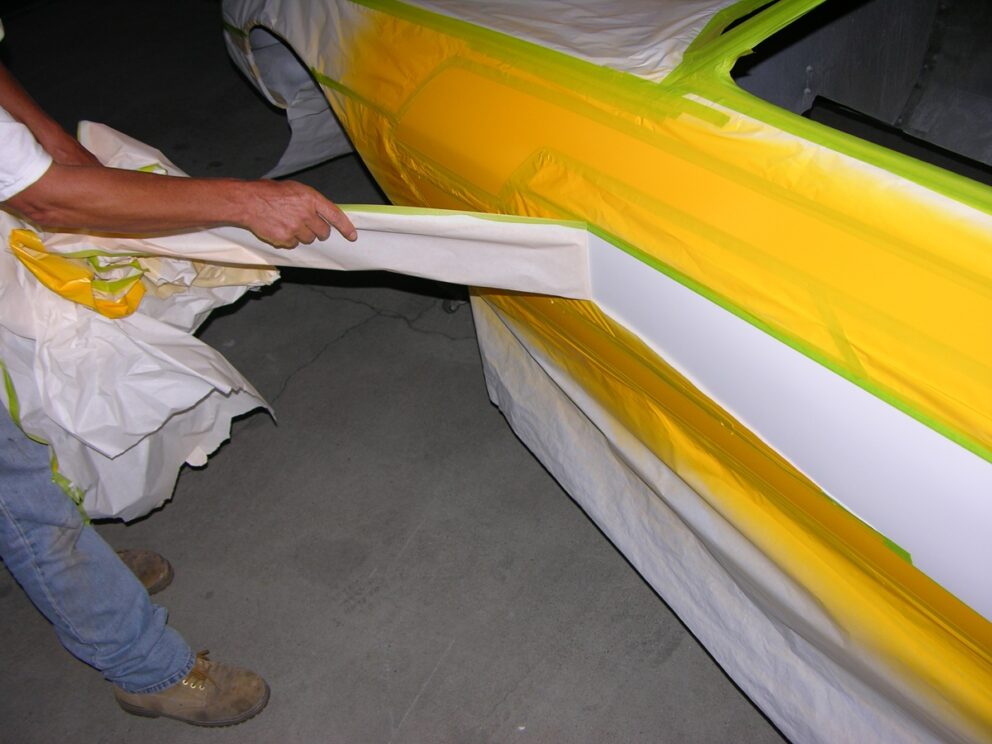
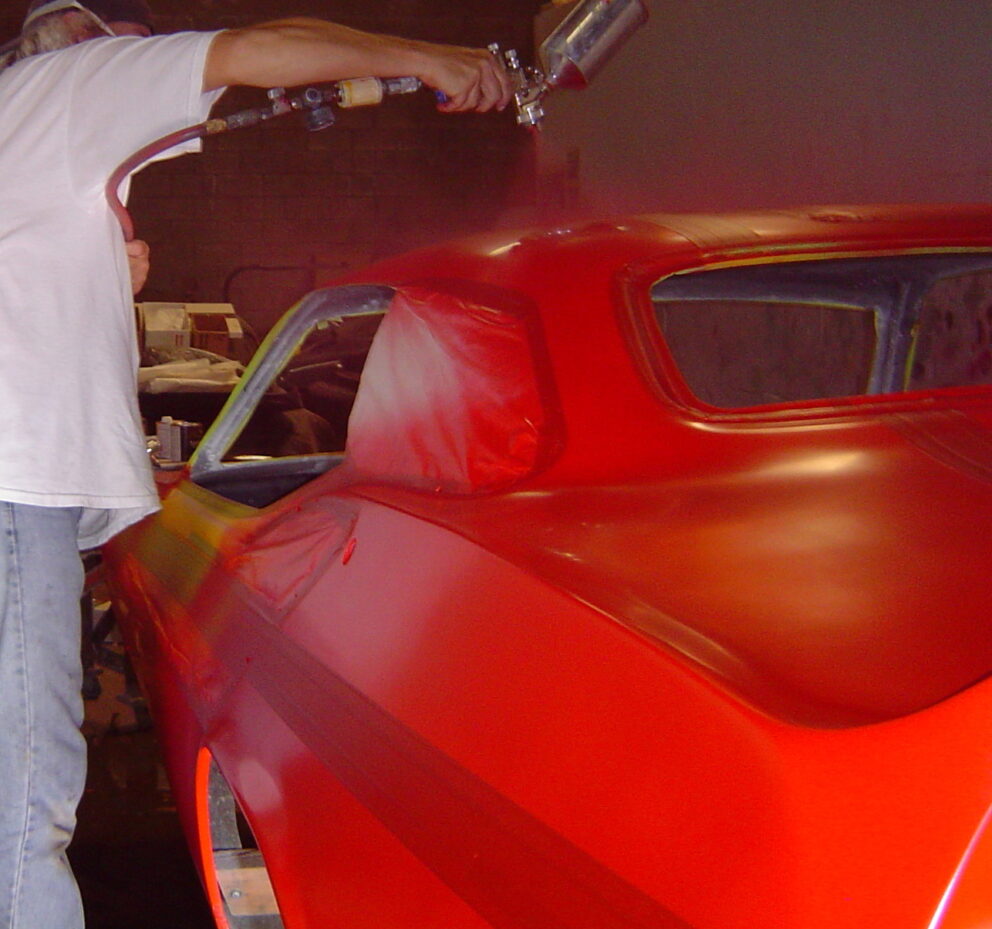
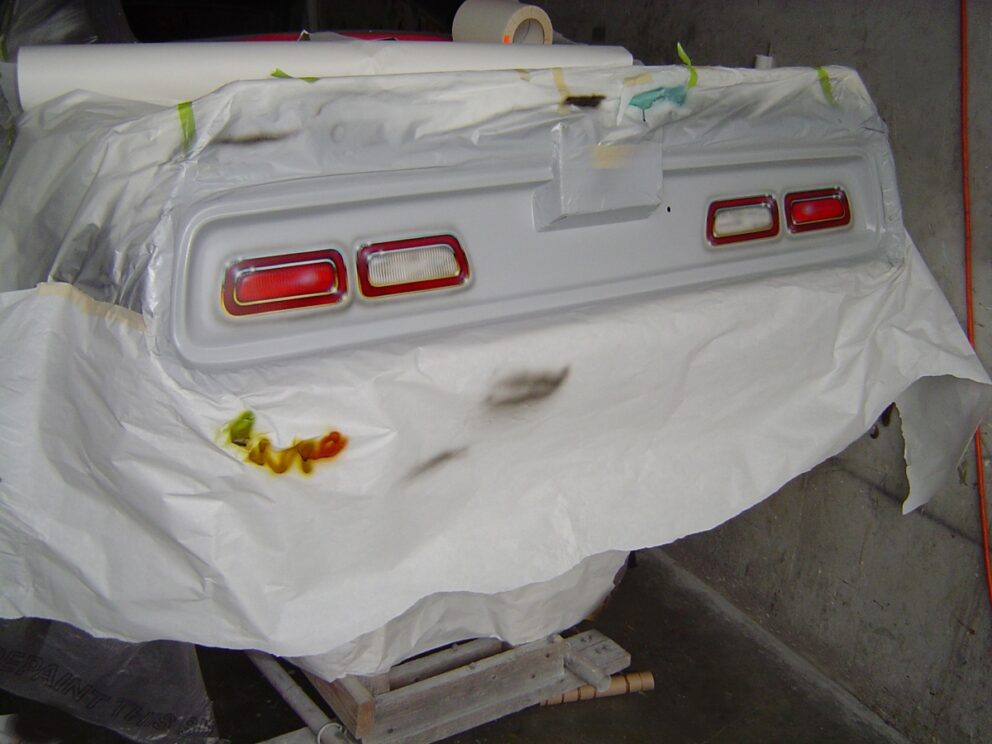
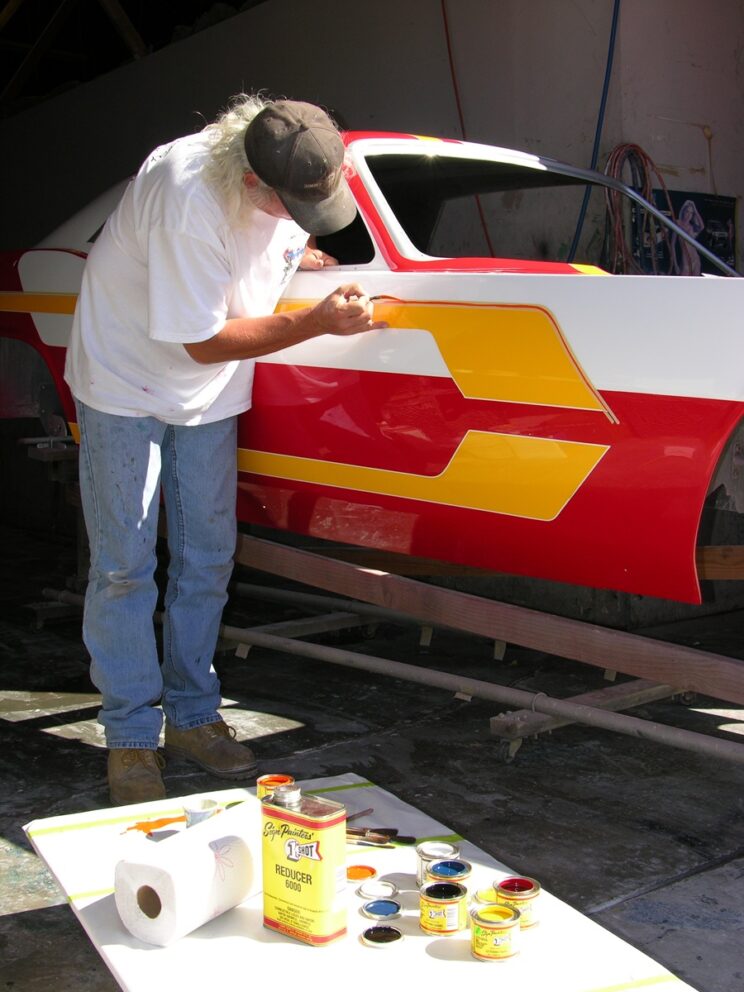
We were fortunate enough to be there during portions of the painting and lettering process, and Steve’s attention to detail and overall dedication to getting everything right was unreal. This was a long process; however, the body is starting to look like the colorful racecar it once was.
NO WRAP ZONE
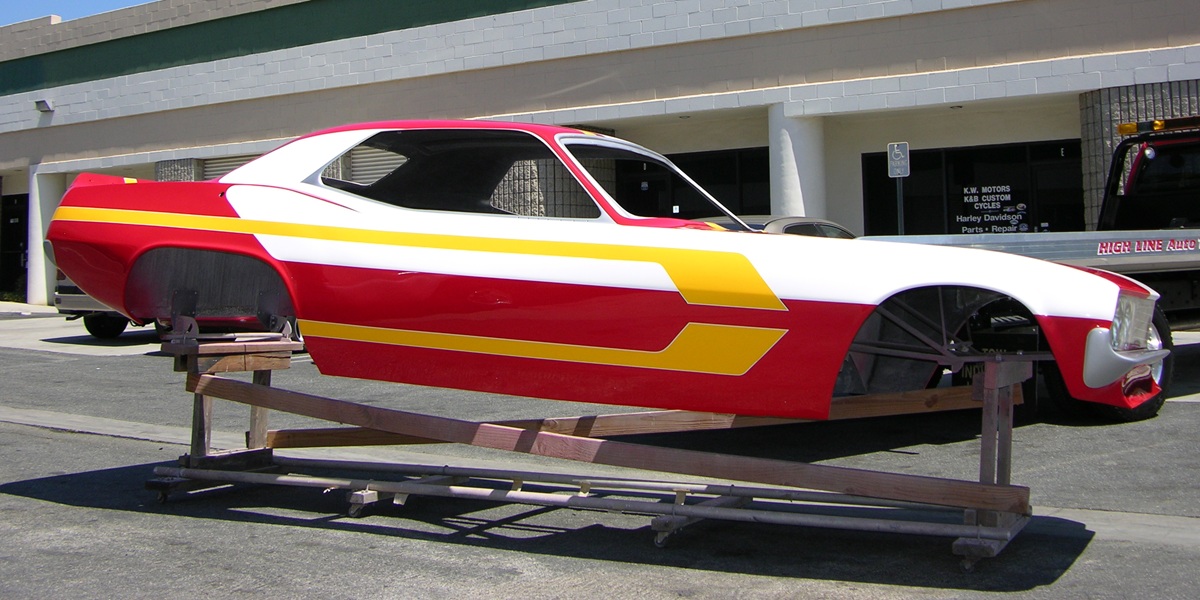
Out in the California sunshine, the progress of the paint job is really stimulating to the eye! And this all was done using “old school” painting techniques, just like how Kirby and Quick did it at the shop in Bellflower (near the corner of Clark and Artesia). Only this time around, it was Funny Car fanatic Steve Shuck! Done in complete traditional fashion, it was a lot of work; however, that’s how they all were done. Today, there would be some that take on a project such as this and simply do a modern wrap finish, which from a distance would accurately look the part. When you see this Funny Car up close, the paint brush strokes and visual clues that it’s the real deal are clearly evident. Retro all the way in presentation!
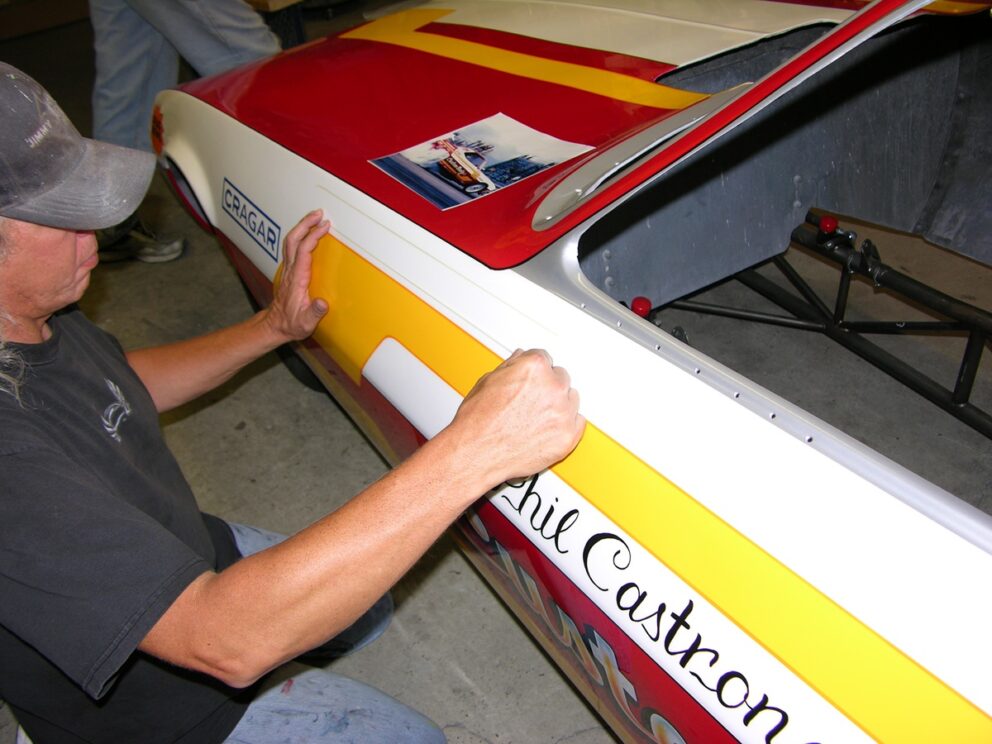
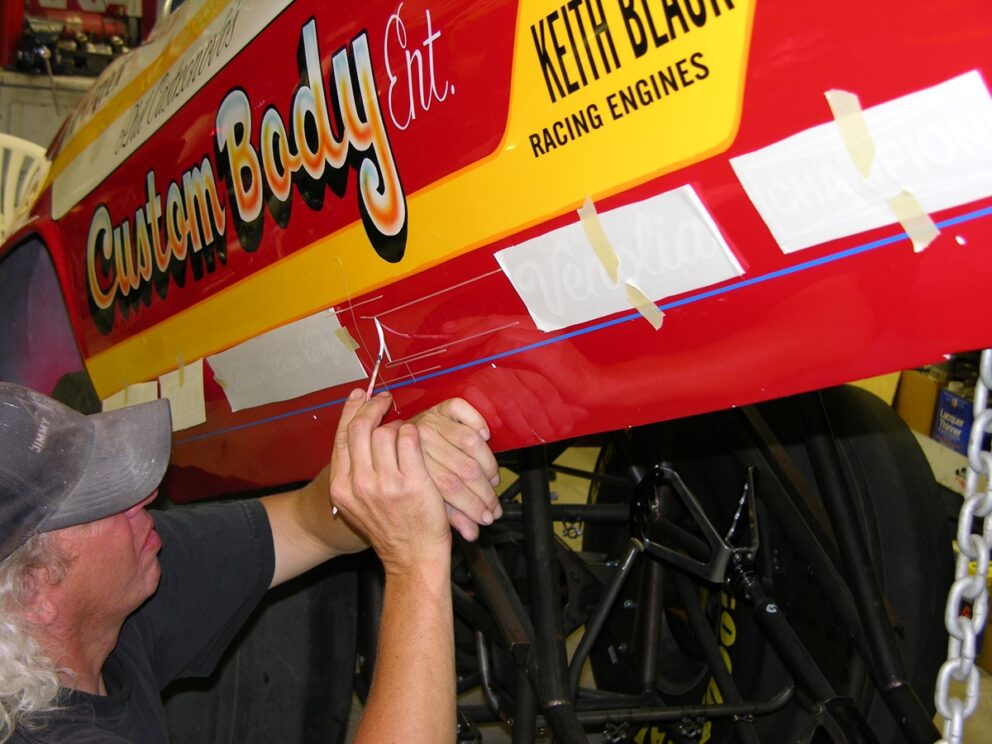
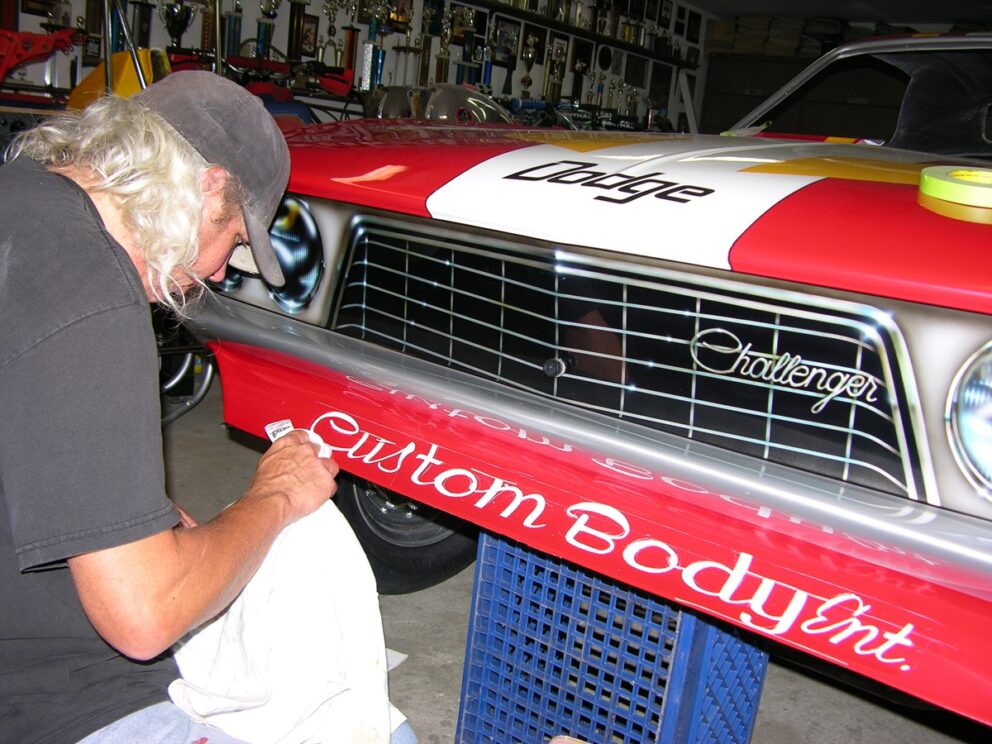
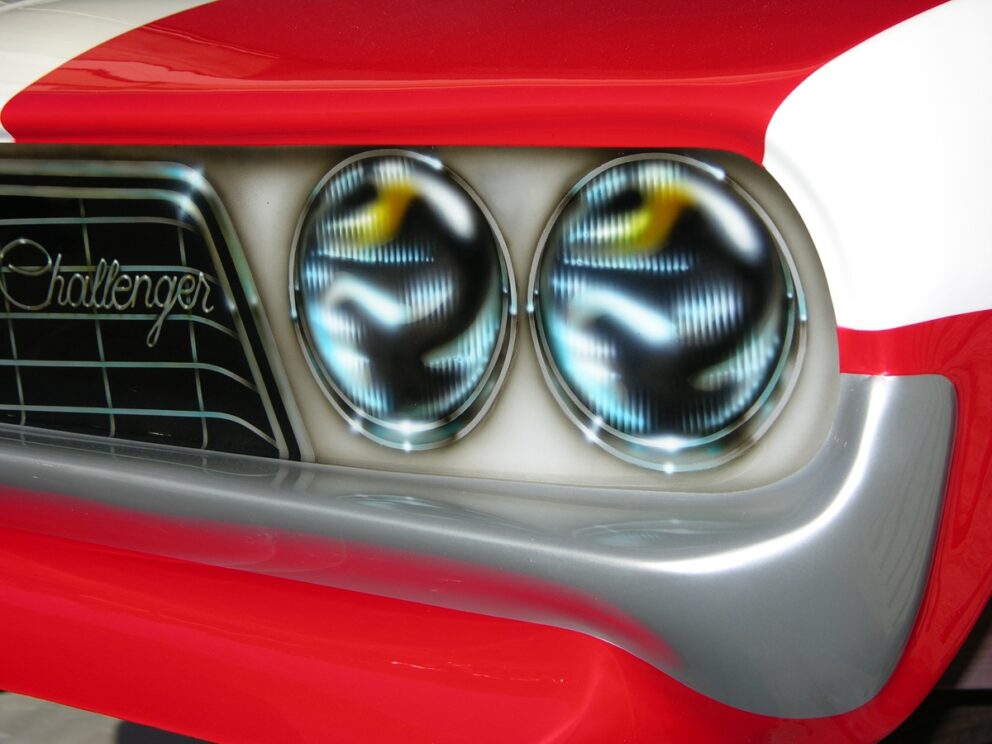
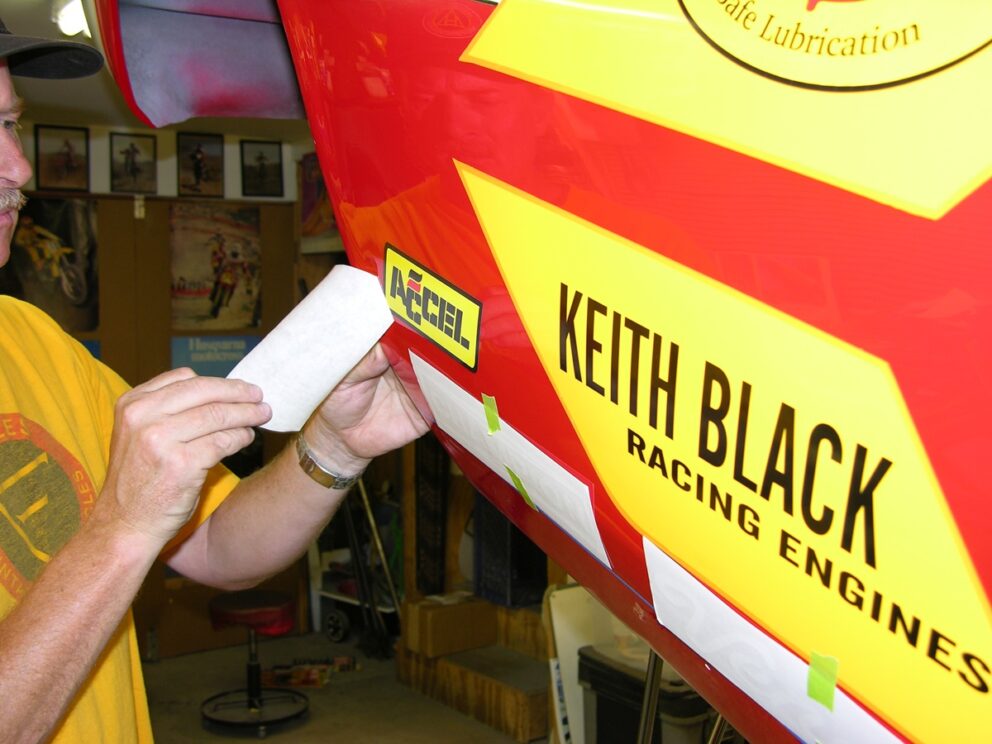
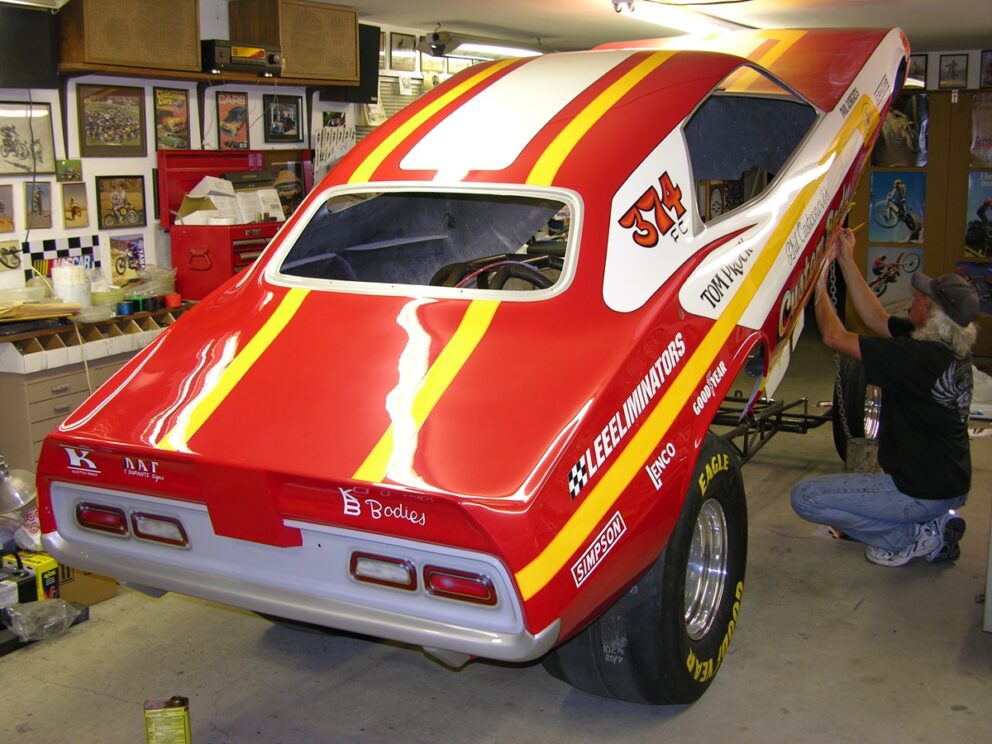
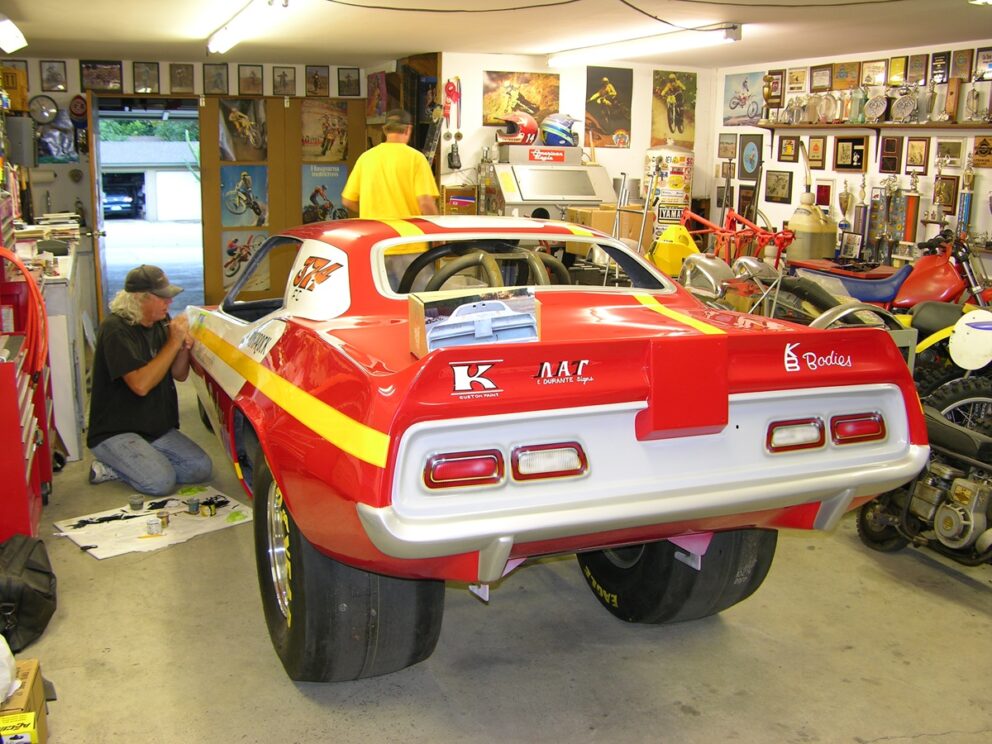
Extreme detailing of the paint and graphics took place in the family garage, all done faithful to the photographic references that had been found. Don Kirby and Nat Quick were both heros to Shuck as a kid and the ability to be able to reproduce their work, to the absolute honor he was given, well it was a huge responsibility not taken lightly. Five-inch diameter headlights were airbrushed in the same flavor as first time around … a time warp for certain.
Because a fiberglass body can create static electricity (not a good thing when applying paint!), Steve added a coiled chain to the body via a large metal clamp, with the bulk of the chain length submerged in water. This procedure demagnetizes the body, allowing the lettering to be applied without the paint literally “jumping off” the brush onto the surface.
It should be noted that this particular car actually ran a fiberglass “’Cuda” body, but because it was so close to a Challenger shape, the car was painted up (grille and taillights) to look like a Dodge rather than a Plymouth. Why? Because the Custom Body car was supported by Dodge and this “Challenger” came after a series of Charger bodies. At the time, when fans thought of the “Custom Body Enterprises” car, they thought of “Dodge.”
NEXT TIME
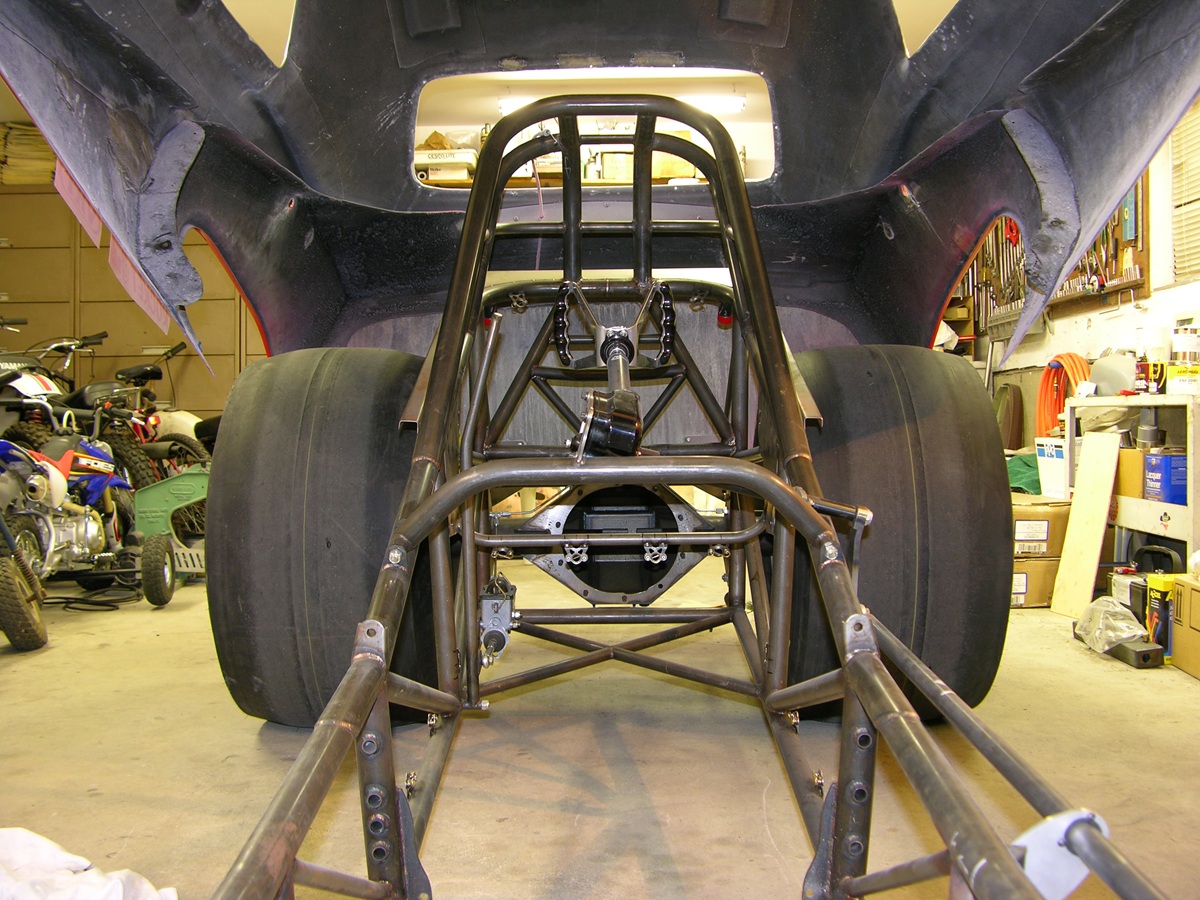
With the body and graphics and decal placement being finalized, next time the chassis is fully detailed, correct parts and pieces found. The Keith Black powerplant is fitted and canard wings placed. With all that, the finished “beauty shots” are taken, it looked like the 1970s all over again! All possible because of talented individuals involved. Second installment, the finished work of art. Yeah, HEMI engine-powered Mopar Funny Car love!
Author: James Maxwell
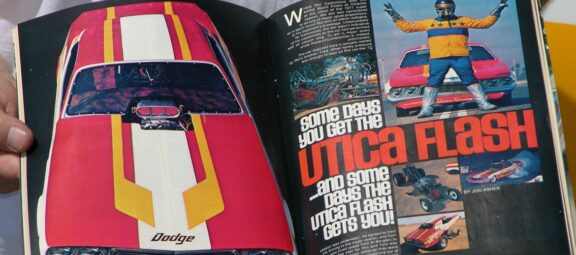
0 Comments